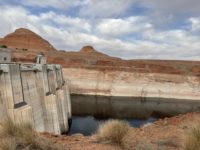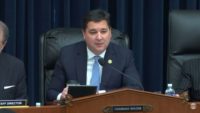The U.S. Environmental Protection Agency and the U.S. Army Corps of Engineers jointly released a final rule Dec. 30 that provides what the agencies hope will be a durable definition of federally protected “waters of the United States” that can withstand potential legal challenges.
The rule returns to the definition most used prior to the Obama administration’s enactment of a 2015 rule that was repealed and replaced by a less protective one during the Trump administration.
EPA says that the pre-2015 definition of “waters of the United States,” or WOTUS, has been used by every administration over the past 45 years. But changing regulatory definitions due to court decisions and different final rules in 2015, 2019 and 2020 has caused uncertainty, confusion for communities and builders and less protection for the nation’s waterways, according to an agency fact sheet released with the rule.
In its 2006 decision in Rapanos v. U.S., the Supreme Court established two tests to determine whether a body of water falls under federal Clean Water Act protections. One, from Justice Antonin Scalia, said that only relatively permanent waters with a direct connection to surface waters are protected under the act. The other, from Justice Anthony Kennedy, established a “significant nexus” test that swept in waters that had an impact on larger, protected downstream waterways.
The new final rule incorporates both tests, saying that waters are protected if they meet either of the standards. According to the EPA fact sheet, “a significant nexus exists if the water body (alone or in combination) significantly affects the chemical, physical or biological integrity of traditional navigable waters, the territorial seas or interstate waters.”
'Clear and Supportable Definition'
EPA and the Corps also released a coordination memo to provide more clarity to agencies about the processes to use in making jurisdictional determinations.
The fact sheet also identifies a number of water bodies that are not protected under the clean water law. These include roadside ditches, artificially irrigated areas that would revert to dry land if not irrigated and water-filled depressions or pits on dry land related to obtaining fill, sand, or gravel for construction activities—until the construction is completed.
“The rule’s clear and supportable definition of waters of the United States will allow for more efficient and effective implementation and provide the clarity long desired by farmers, industry, environmental organizations and other stakeholders,” said Assistant Secretary of the Army for Civil Works Michael Connor, in a statement.
EPA says the rule is the culmination of input from 10 public round-table meetings across the nation and more than 114,000 public comments.
Environmental groups praised the rule for the most part, though some said that more protections are needed to truly carry out the intent of those who wrote the Clean Water Act in Congress, enacted in 1972.
“The agencies put a lot of time, effort and thought into this rule,” said Stuart Gillespie, senior attorney at Earthjustice, in a statement. “They reviewed hundreds of scientific articles, worked through thousands of public comments and developed a framework for protecting our nation’s water from reckless development and industrial pollution. The rule is not perfect, but it’s an important step towards restoring protections to a vast network of waterways that play a key role in supporting public health, resilient ecosystems and economic growth.”
Premature, Say Industry Groups
But construction and business groups are saying EPA's release of the rule was premature, because the the Supreme Court has yet to rule on a key case, Sackett v. EPA, for which arguments were presented in October.
“We are disappointed that the EPA ignored [our] call for the agency to wait while Sackett v. EPA is pending at the U.S. Supreme Court,” said Brad Close, president of the National Federation of Independent Businesses. “America’s small farmers, ranchers, developers, contractors and other small businesses with water on their property have been affected greatly by the ongoing changes to WOTUS standards. This final rule further complicates compliance standards and increases uncertainty for small businesses as they wait to hear from the Supreme Court.”
Some groups found the Trump-era rule more to their liking. “By repealing the [Trump era] rule’s common sense definition of ‘waters of the United States’ and returning Clean Water Act enforcement to unpredictable, case-by-case determinations of jurisdictions, the Biden administration’s final WOTUS rule is a significant step back,” said Ben Brubeck, Associated Builders and Contractors’ vice president of regulatory, labor and state affairs, in a statement.
“Contractors have been making good faith efforts to comply with a rule that has changed six times in seven years. This has added unnecessary delays and hardships for contractors trying to comply with unclear and ever shifting requirements, especially considering they can carry criminal penalties," noted Brian Turmail, Associated General Contractors of America vice president of government affairs and strategic initiatives, in an email. “The administration should have waited until after important legal questions have been resolved. The President has opted to offer confusion, delay and cost to countless construction projects.”






Post a comment to this article
Report Abusive Comment